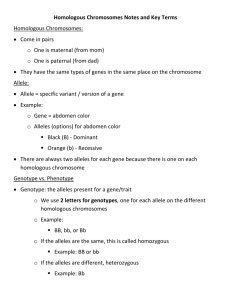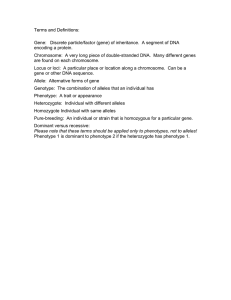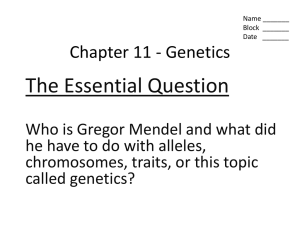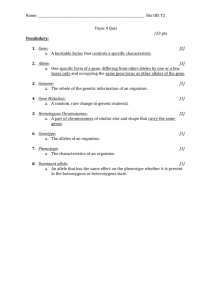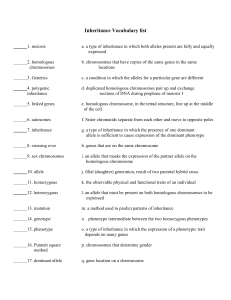Language of Genetics Handout
advertisement
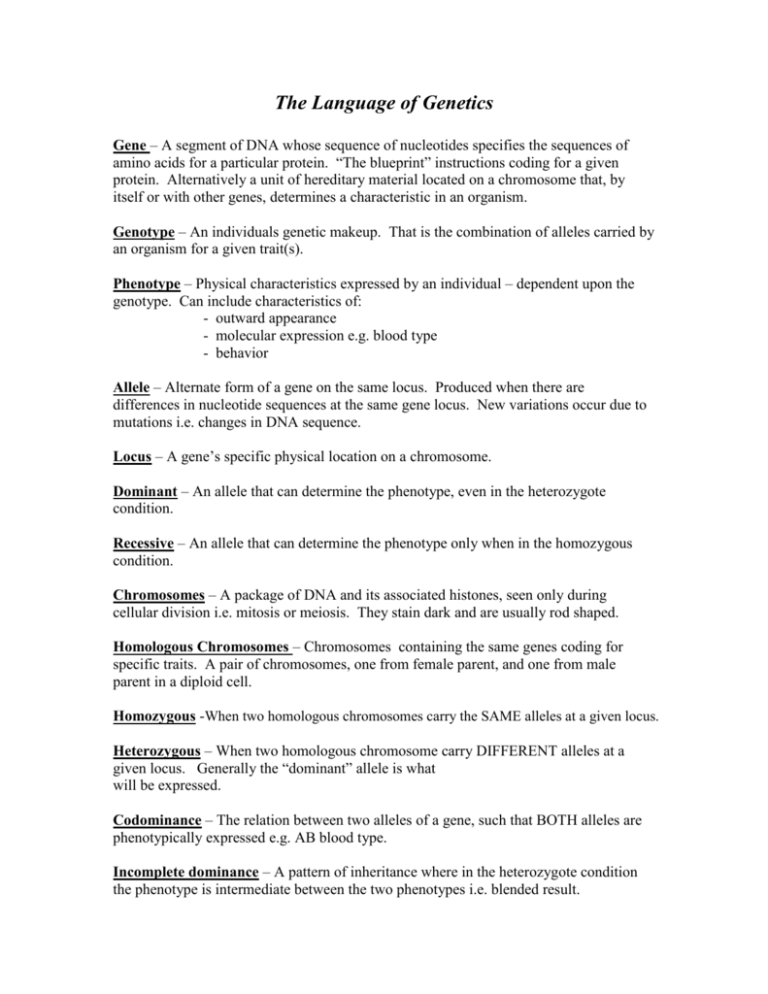
The Language of Genetics Gene – A segment of DNA whose sequence of nucleotides specifies the sequences of amino acids for a particular protein. “The blueprint” instructions coding for a given protein. Alternatively a unit of hereditary material located on a chromosome that, by itself or with other genes, determines a characteristic in an organism. Genotype – An individuals genetic makeup. That is the combination of alleles carried by an organism for a given trait(s). Phenotype – Physical characteristics expressed by an individual – dependent upon the genotype. Can include characteristics of: - outward appearance - molecular expression e.g. blood type - behavior Allele – Alternate form of a gene on the same locus. Produced when there are differences in nucleotide sequences at the same gene locus. New variations occur due to mutations i.e. changes in DNA sequence. Locus – A gene’s specific physical location on a chromosome. Dominant – An allele that can determine the phenotype, even in the heterozygote condition. Recessive – An allele that can determine the phenotype only when in the homozygous condition. Chromosomes – A package of DNA and its associated histones, seen only during cellular division i.e. mitosis or meiosis. They stain dark and are usually rod shaped. Homologous Chromosomes – Chromosomes containing the same genes coding for specific traits. A pair of chromosomes, one from female parent, and one from male parent in a diploid cell. Homozygous -When two homologous chromosomes carry the SAME alleles at a given locus. Heterozygous – When two homologous chromosome carry DIFFERENT alleles at a given locus. Generally the “dominant” allele is what will be expressed. Codominance – The relation between two alleles of a gene, such that BOTH alleles are phenotypically expressed e.g. AB blood type. Incomplete dominance – A pattern of inheritance where in the heterozygote condition the phenotype is intermediate between the two phenotypes i.e. blended result.


